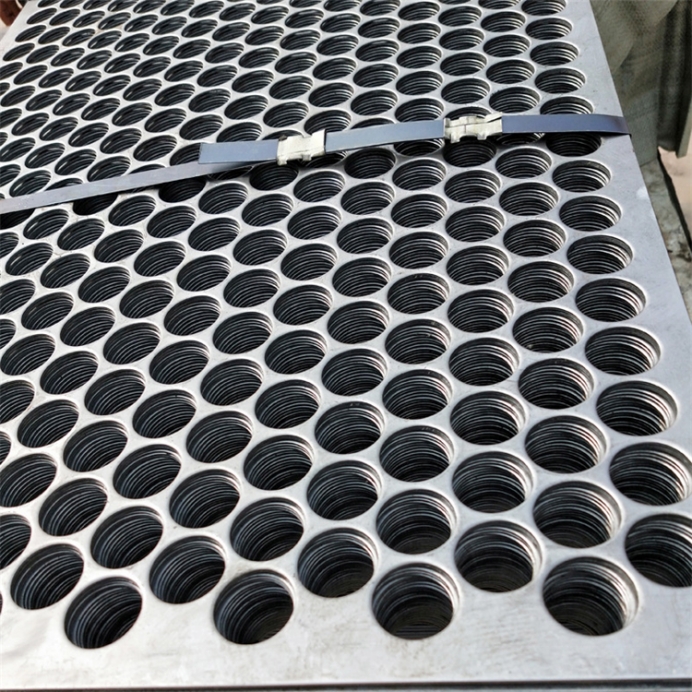Understanding Anti-Climb Fencing An Essential Security Measure
In today's world, security has become a paramount concern for individuals and organizations alike. Whether it’s safeguarding residential properties, commercial buildings, or critical infrastructure, the threat of unauthorized access is ever-present. Among various security measures, one effective solution gaining prominence is anti-climb fencing. This article explores the details of anti-climb fencing, its design features, benefits, and applications.
What is Anti-Climb Fencing?
Anti-climb fencing refers to a specialized type of fencing designed to prevent individuals from easily scaling or bypassing it. Typically made from high-quality materials, these fences incorporate specific design features that deter climbing or any form of forced entry. Unlike standard security fencing, anti-climb fences are engineered with a focus on both physical deterrence and visual security.
Design Features
1. Height One of the most significant characteristics of anti-climb fencing is its height. Generally, these fences stand at least 2 meters (approximately 6.5 feet) tall, making them more challenging to scale. In high-security areas, fences may be even taller to enhance protection.
2. Material Anti-climb fences are usually constructed from robust materials such as steel or reinforced aluminum. The materials are often coated with anti-corrosive finishes to ensure durability against the elements.
3. Optical Mesh Design Many anti-climb fences utilize a mesh panel design, which provides visibility while preventing footholds. The spacing between the mesh bars is carefully calculated to thwart climbing attempts without compromising visibility.
4. Inverted Spikes or Barbed Wire These additional elements are often used at the top of the fence to discourage climbing further. Inverted spikes or barbed wire can be effective deterrents while also ensuring that the fence remains visually intimidating.
5. Concrete or Steel Base A strong foundation is essential for anti-climb fencing. Many designs feature a concrete or steel base that adds stability and makes it difficult to dig under the fence.
Benefits of Anti-Climb Fencing
1. Enhanced Security The primary benefit of anti-climb fencing is its ability to significantly enhance security. By making it more challenging to access the property, these fences serve as a strong deterrent against intruders.
2. Visibility Unlike solid fencing, anti-climb designs allow for visibility without sacrificing security. This means that surveillance cameras can effectively monitor the area without obstruction.
anti climb fencing detail

3. Low Maintenance Anti-climb fences, especially those made from durable materials, require minimal maintenance over time. Their resistance to weather conditions means they are less likely to suffer from wear and tear compared to traditional wooden fences.
4. Aesthetic Versatility Available in various styles and finishes, anti-climb fencing can complement different architectural designs and landscapes. They can be customized to suit the aesthetic preferences of property owners.
5. Cost-Effective While the initial investment in anti-climb fencing may be higher than standard fencing, the long-term benefits, including reduced crime rates and lower insurance premiums, often make them a cost-effective solution.
Applications of Anti-Climb Fencing
Anti-climb fencing is versatile and can be utilized across various sectors.
1. Residential Properties Homeowners can benefit from increased protection against break-ins and vandalism by installing anti-climb fencing around their properties.
2. Commercial Facilities Businesses often invest in anti-climb fencing to protect assets, equipment, and sensitive areas from theft and trespassing.
3. Industrial Sites Factories and warehouses, especially those dealing with hazardous materials, require secure perimeters to prevent unauthorized access.
4. Public Spaces Parks, schools, and recreational areas can use anti-climb fencing to protect children and deter criminal activities.
5. Critical Infrastructure Government buildings, data centers, and other sensitive sites often require enhanced security measures, making anti-climb fencing an ideal choice.
Conclusion
In an era where security is a growing concern, anti-climb fencing offers a robust and effective solution for protecting properties and assets. Its unique design features, combined with its multiple benefits, make it a preferred choice for various applications. By investing in anti-climb fencing, property owners can enjoy peace of mind knowing they have taken significant steps to secure their environments against unauthorized access and potential threats.
-
The Best Metal Mesh Solutions: Expanded Aluminum Metal vs. Expanded Stainless Steel Metal
NewsSep.10,2024
-
Round Perforated Sheets vs. Hexagonal Perforated Sheets vs. Embossed Perforated Sheet Metal
NewsSep.10,2024
-
Perforated Metal Sheets
NewsSep.10,2024
-
Experience The Excellence Of Stainless Steel Grating
NewsSep.10,2024
-
Discover the Versatility Of Metal Mesh Expanded Forming Machines
NewsSep.10,2024
-
Discover The Advantages Of Steel Grating For Sale
NewsSep.10,2024
Subscribe now!
Stay up to date with the latest on Fry Steeland industry news.

